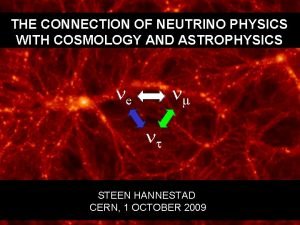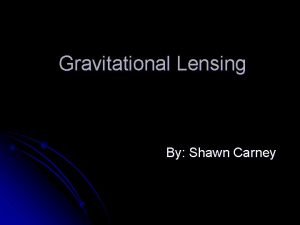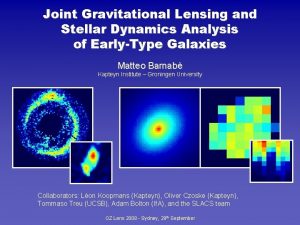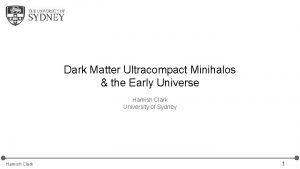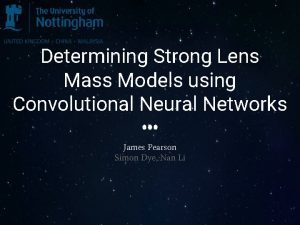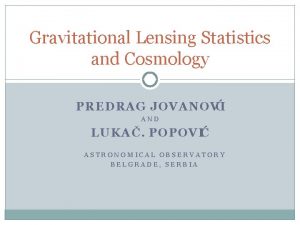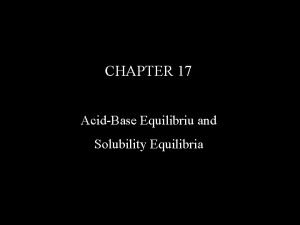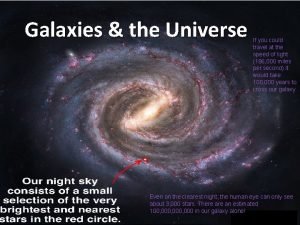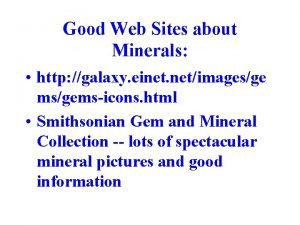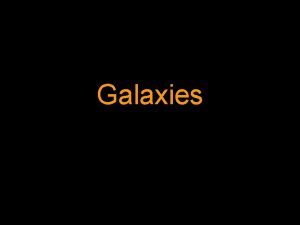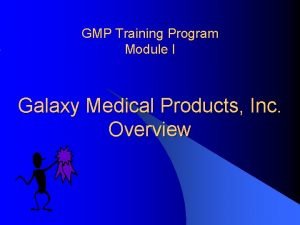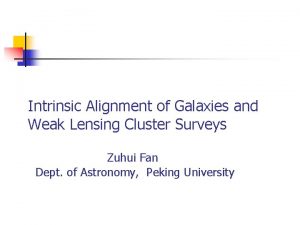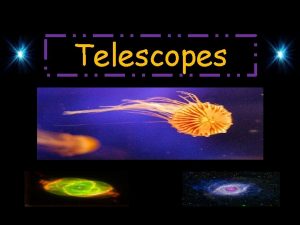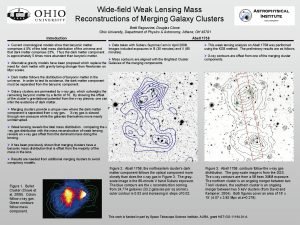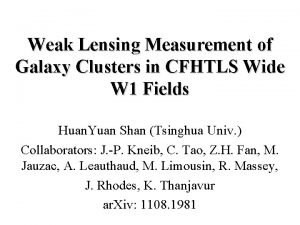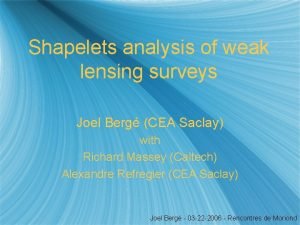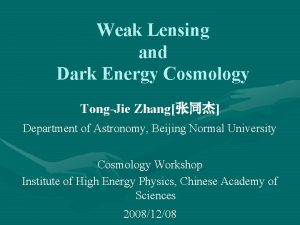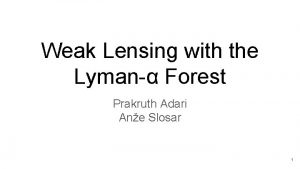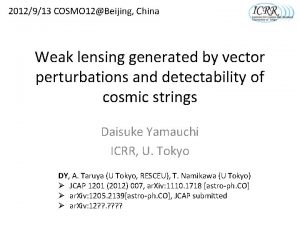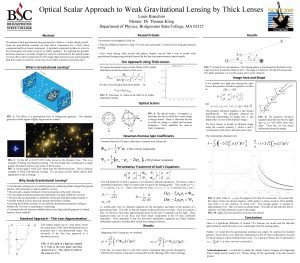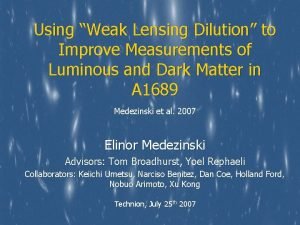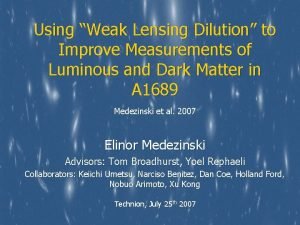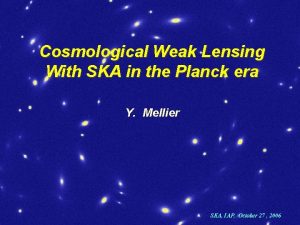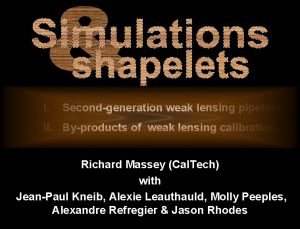Exploring Galaxy Intrinsic Alignment with Fullsky Weak Lensing



















- Slides: 19

Exploring Galaxy Intrinsic Alignment with Full-sky Weak Lensing Simulation Chengliang Wei Purple Mountain Observatory, CAS Collaborators: Guoliang Li, Xi Kang, et al. June 7, 2021 @ ISSI. Bern Cosmic Shear

Gravitational Lensing GL is powerful in directly mapping the mass distribution Mellier, ARA&A 37, 127 (1999) Jullo et al. (2010) H. Y. Shan et al. (2017)

Tension in S 8 between recent weak lensing surveys Chihway Chang, et al. (2018) Hildebrandt, et al. (2017) We need better understanding of the effects of: • Systematic effects: IA, PSF, shear measurement, etc. • Sky coverage, magnitude limit, source redshift distribution, mask effect, etc. What cause the discrepancy between different WL surveys?

Realistic Simulation of WL To understand different effects, we need the simulation: producing mock galaxy catalogues with lensed images: including galaxy intrinsic shape and lensing effect Step 1 + DM simulation Step 2 Semi-analytical model Step 3 + Ray-tracing Simulation cosmic shear comparison (credit: LSST group) Simulated galaxy image Real observation

How to produce mock galaxy image catalogue Step 1, N-body simulation: ELUCID (local universe reconstructed) • Lbox=500 Mpc/h, Np=30723, mp=3. 4*108 M⊙ , 2 times of the resolution of Millennium Simulation, WMAP 9 cosmology: Ωm=0. 28, �� 8=0. 82 0. 5 ≃0. 79 S 8=�� 8(Ωm/0. 3) • Lbox=1000 Mpc/h, Np=30723, for check of power spectrum on large scales Step 2, Semi-analytical model for galaxy formation: Luo Y, KX. , Kauffmann G. , Fu J, 2016 (based on the L-Galaxy Munich model)

How to define galaxy intrinsic shape? (we follow Joachimi et al. 2013) ■ Central galaxies • Elliptical (Early-type) • Spiral (Late-type) spin inertial tensor ■ Satellite galaxies ■ Joachimi et al. 2013 model (J 13) SS Se C ■ Random model (Hung-Jin Huang, R. Mandelbaum et al. 2018)

Galaxy intrinsic alignment: dependence on morphology (Wei+, 2018, Ap. J, 853, 25) These correlations are consistent with that in Joachimi et al. (2013)

Step 3: Spherical Ray-tracing (RT) Simulation ●Multiple-lens-plane RT Jain+(2000), White & Vale (2004), Hilbert+(2009), etc. S. Hilbert et al. (2009) ●Spherical RT Das & Bode(2008), Fosalba+(2008), Teyssier+(2009), Becker (2013)

How accurate is our ray-tracing? The power spectrum of E/B model, also show comparison with theoretical prediction. Our RT is accurate • The simulated power spectrum from RT agree with both Born approximation and Halofit theoretical prediction, up to very small scales • The B-mode is strongly suppressed (numerical effect is very small)

Full-Sky Convergence/Shear Field Map Wei C, Li G, Kang X, +, 2018 Ap. J, 853, 25

To compare with the data, we select simulated galaxies which have the same • Redshift distribution of source galaxies • Sky coverage (Ki. DS: 450 deg 2) • Source galaxies number density DIR

Model predictions VS Observations Tomographic shear correlations: comparison with Ki. DS-450 results by Hildebrandt et al. (2017) , where 2=1. 36 and S=1. 80σ Our model agrees well with Ki. DS, with reduced ��

Model predictions VS Observations constraints on satellite alignment model ■ J 13 model SS Se C J 13 model produces too strong power on small scales

Contribution of II and GI terms Non-linear model of galaxy IA: • We found II term is very weak, GI is 10% of the matter power spectrum • The GI term is positive, not negative from the linear model (Hirata & Seljak 2004)

The GI terms: dependence on galaxy morphology Pure Spirals Pure Ellipticals We argue the existed WL theory (intrinsic IA model) should consider the GI contribution from early-type and late-type galaxies separately (actually, most observed galaxies are spirals)

Galaxy II and GI model G I G Hirata & Seljak (2004) N. Chisari et al. (2015)

Redshift Distribution in DES Y 1 (2018)

Results in tomographic test

Summary • We have constructed a mock galaxy catalog (lensed images) , using ray tracing simulation with realistic galaxy formation • Our cosmic shear correlations agree well with Ki. DS • We favor a random distribution for satellite orientation around central galaxy • We found a significant Positive GI signal, from spiral galaxies, contrary to usual expectation from linear model for elliptical galaxy Thanks for your attention!
 Galaxys
Galaxys Weak lensing
Weak lensing Lensing
Lensing Lensing
Lensing Lensing
Lensing Gravitational lensing
Gravitational lensing Gravitational lensing
Gravitational lensing Global alignment and local alignment
Global alignment and local alignment Compare two sequences
Compare two sequences Global vs local alignment
Global vs local alignment Dna substitution
Dna substitution Global alignment vs local alignment
Global alignment vs local alignment What are strong bases
What are strong bases Strong vs weak base
Strong vs weak base Weak acid and weak base reaction
Weak acid and weak base reaction Jupiler
Jupiler Galaxy.einet
Galaxy.einet What galaxy is
What galaxy is Our home galaxy
Our home galaxy Galaxy medical products
Galaxy medical products

